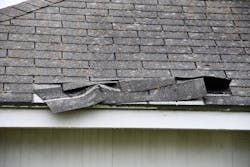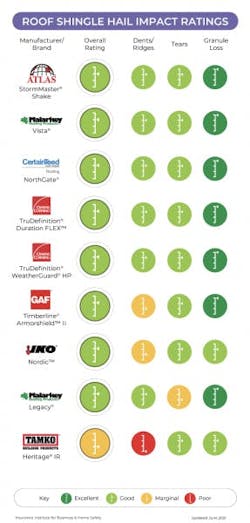Building Materials Expert Shares Insights on Hail-Resistant Roofing
On the latest episode of 7 Minutes of BS, host and head of Pro Trade Craft Dan Morrison sat down with materials reseach expert Tanya Brown-Giammanco to discuss the how, why and how of hail damage: how hail damage works; why hail damage matters; and how to minimize damage from hailstones by selecting the right roofing shingles.
As the former Managing Director of Research at the Institute for Business and Home Safety (IBHS) and currently the Director of Disaster and Failure Studies at the National Institute of Standards and Technology (NIST), Brown-Giammanco has a deep understanding of the risk hail poses to homes as well as the means by which dwellings can be best protected.
"When hail falls from a thunderstorm, it’ll fall at a specific speed based on the size of the hailstone and its aerodynamics, so when it hits a roof, its hitting with a specific impact energy," says Brown-Giammanco. "Hailstones that are very hard that hit a shingle surface are more likely to cause dents or tears, and hailstones that are softer are more likely to cause granule damage on an asphalt shingle. So the hailstone characteristic themselves matter, and the roofing material matters as well."
The long-time researcher explains as the impact of hail differs based on a variety of factors, so does the level of protection offered by the various available roofing materials. "A roofing material that is very rigid, like tile or metal, is going to respond differently than a material that is more pliable, like a shingle."
Finding the Most Resilient Roofing Material
"It’s one of those nuisance hazards," she says. "There are no good years and bad years with hail, it’s pretty consistently in the ten billion dollar range."
In the search to identify the most truly resilient roofing material against hail damage, IBHS developed a comprehensive test that evaluates how severe dents are on the material when they occur, how severe cracks are, and how sever granule loss is. "All of those things matter in terms of a good-performing product."
After testing a number of asphalt shingles, Brown-Giammanco and her team discovered that even products rated for the same weather didn't perform the same when put to the test. "What we found is that they didn't all perform the same, which is why (IBHS) has certain products that are rated 'Good' or 'Excellent.'" Those products, she adds, will give homeowners the "best change to get a hail-resistant or impact-resistant roof covering."

